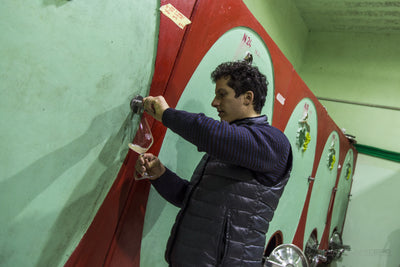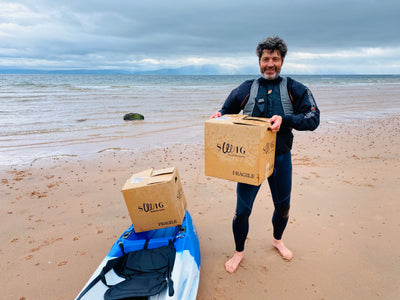Here's a quick run down on some of the options available to winemakers today, all which can have great effects on the finished wine.
Stainless steel: perhaps the most commonly used vessel, and most technical of all, as they also offer the bonus of temperature control and being impervious to oxygen. The use of stainless steel was adopted by the winemaking industry in the 1960s, having borrowed the idea from the dairy industry. Easy to clean, neutral, and with the option of being 'open-top' or entirely sealed to oyxgen, many producers opt to ferment in them, and some to age their wines too, in particular if producers are looking to emphasise and promote the aromatics and purity of fresh and fruity whites.
Wooden barrels: The barrel may not be the oldest vessel, but perhaps the most traditional and well-known, with a myriad of benefits, allowing micro-oxygenation of the wine, some element of tannin from the wood and depending on its age and whether it has undergone any toasting, some flavours too. Some producers also opt to ferment wines in oak as well as age them for better integration of flavours. There's much choice inside the bracket of barrels too, from the choice of wood, to the size and shape.
Oak is certainly the most commonly used wood, but some opt for Chestnut or Acacia as well.
On the size, there’s 225 litre barrels known as a barrique, most traditionally used in Bordeaux, to 228 litre 'pièce' in Burgundy, 300 litre puncheons or Hogshead and 500l too. And then there are 600 litre demi-muids and foudres too, and tonneau, cask and botti traditionally used in Piedmont in Italy, which can hold up to 30,000litres.
As for shape, gone are the days of the small traditional barrel. There are cigar shaped barrels, which allow greater lees contact and a steadier movement of oxygen. Or there's the oh-so-trendy Stockinger foudre 'the winemaker's Strad*’ or Taransaud's various options, even including the Ovum, the first ever wooden Egg shaped barrel. More on winemaking 'eggs' further on!
Concrete, tanks and eggs: Becoming trendier by the day, although in no way new, having been used since the early 1900s, and perhaps even longer. Concrete shares some similar benefits to barrels, being a porous substance allowing micro-oxygenation of the liquid inside, allowing similar ageing to wine in a barrel, but what’s different here is how concrete doesn’t impart any flavour on the wine. This is of great attraction to many producers on a quest to produce the most terroir-expressive wines they can. Further pros is that it is cost effective, hard-wearing and relatively resistant to temperature changes thanks to its thick walls, and is certainly producing some astonishingly fine wines to boot.

Concrete tanks in use at Essex winery, Danbury Ridge
And then there’s concrete eggs. Reminiscent of amphora in their shape, the first concrete egg was commissioned by Chapoutier and produced by French concrete vat manafacturer Nomblot in 2001. And oh boy have they been a success story since then, and spread far across the winemaking world, particularly among many a trendy and natural wine inclined winemaker.
What's most important here is the shape, which encourages the natural circulation and uninterrupted suspension of the lees, imbuing the wine with wonderful texture and added complexity. In a way it's much like battonage, but all the hard work is done for you! And being made from concrete, they also boast many of the same pros as already laid out above.
Amphora, Clay Pots & Qvevri: Dating back nearly 6000s years, clay or earthenware pots called amphora certainly take the title for the world's oldest winemaking vessel. In Georgia, widely acknowledged as the oldest wine producing region, these pots are called qvevri, and are commonly buried in the floor of the cellar (or marani), and where traditionally wines are left to ferment and remain with the grape solids for some months at very consistent temperatures of around 15-16 degrees. They have been used in other old world regions for many years too, and each country has their own name. In Spain, they are known as Tinajas, and in Portugal, they're known as Talhas. Clay pots are beginning to be the vessel of choice for many producers today. Our very own Pieter Walser at BLANKbottle now always ferments a portion of Chenin Blanc in clay pot that he blends into his signature cuvee Moment of Silence.
Glass orbs and tanks
Now here's something very new and rather niche! Glass may be the the foremost used vessel for finished wine, and here and there, small 20 litre demijohns have been used by producers for many years too. But just in the last few years, a company called Wineglobe have started producing beautiful glass orbs from 25 to 400 litres which are catching the eye of winemakers on the hunt for producing wines of the greatest purity. With flawless hygiene and no influence of flavours from porosity, maybe we'll see a surge in the popularity of these eye-catching, Christmas bauble-like globes in the coming years!
Interested? Read more by clicking here.


